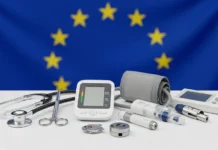As a healthcare provider, you understand the importance of providing exceptional care for your patients. However, running a successful medical practice requires more than medical expertise: it’s a dedicated balance of delivering top-notch patient experiences while maximizing operational efficiency and driving revenue growth. As such, streamlining your practice’s workflows and processes is crucial for boosting productivity, reducing overhead costs, and increasing your bottom line.
This article provides practical strategies to help practices of all sizes maximize their team’s potential, optimize resource utilization, and send their revenue streams soaring while delivering exceptional patient care. Read on!
Optimize Insurance Reimbursement
Securing fair insurance payouts is crucial for healthcare facilities to increase their revenues. Review your fee structure regularly and negotiate with insurers to get competitive reimbursement rates. For instance, a pediatric practice might renegotiate higher rates for well-child visits, reflecting their expertise in developmental screenings.
Consider hiring billing healthcare specialists, such as NGA Healthcare, who can help boost your revenue by optimizing insurance coding and appeals for denied claims. An expert eye can spot underpaid procedures, like an orthopedist overlooking fracture care reimbursement.
When you stay proactive, update fee structures, and leverage billing expertise, you maximize your insurance reimbursements while delivering quality patient care. Remember, the key is to advocate for your practice’s financial health through strategic negotiations and meticulous claims management.
Streamline Workflows And Processes
Evaluate current workflows to identify areas of improvement. Start by standardizing common procedures like patient check-ins, room cleaning protocols, and medication administration. Clear, consistent guidelines reduce errors and wasted effort.
Improving communication is also critical. A quick gathering will help your staff members to coordinate schedules and discuss patient needs. Patient portals allow easy appointment confirmations and refill requests, cutting down on phone time. Even little tweaks to collaboration can create significant workflow improvements.
Additionally, try to minimize wait times as much as possible to keep your patients happy. Strategies like online self-scheduling, automated reminders, and double-booking short follow-ups can smooth patient visit flow. You can use a lunchtime rush schedule to group same-day appointments together.
By standardizing processes, cross-training staff members, managing wait times, and optimizing communication, you’ll run a tighter ship. A streamlined, productive office translates to better patient satisfaction and experiences all around.
Invest In Technology
Investing in the right technology can help take your medical practice to the next level. It helps automate tedious tasks, improve communication, and empower your team. Here are a few technological tools you can consider for your practice:
Electronic Health Records
You can streamline your health care operations by adopting an Electronic Health Record (EHR). This software enhances data accuracy and offers quick access to patient information. It enables informed clinical choices and seamless care coordination. For example, during routine check-ups, pediatricians can easily review a child’s immunization history using the EHR, which results in timely vaccinations.
Telehealth
Virtual telehealth visits bring primary care directly to patients without the need for travel. This allows you to see more patients by accommodating remote appointments, potentially increasing your practice revenue. A busy parent, for instance, can easily video chat with their pediatrician about a child’s fever from the comfort of their home, ensuring accessible quality care.
Practice Management Software
A practice management system automates scheduling appointments, sending reminders, billing patients, and record management. This reduces your staff’s administrative burdens, allowing them to concentrate on delivering quality patient care. For example, your front desk can quickly reschedule a missed appointment while prioritizing friendly rapport with patients.
Generally, investing in these technologies improves patient coordination, streamlines workflow, and increases accessibility to quality healthcare services, which can result in higher revenue for your practice.
Prioritize Patient Engagement And Retention
Developing solid relations with existing and new patients is also crucial for steady revenue. Survey your patients to understand their experiences and identify areas for improvement. For instance, ask about wait times or staff friendliness, and then use this feedback to enhance patient satisfaction.
Prevent no-shows with automated text or email reminders for upcoming appointments. Patients appreciate the convenience of these simple alerts. Also, consider implementing online self-service. These let patients book visits, request refills, and access records easily from home. User-friendly digital tools empower patients while reducing staff workloads.
Little touches like personalized care instructions or celebrating patient milestones can also boost patient satisfaction. When patients feel valued and have positive experiences, they’re much more likely to continue choosing your practice. Investing time into cultivating strong patient relationships pays off through increased loyalty and sustained growth.
Focus On Staff Training And Development
Empowering and developing your team is crucial for peak productivity. Provide ongoing training opportunities that cover the latest technologies, coding updates, and patient care best practices. This equips your medical team with vital skills, boosts confidence, and minimizes error.
Encourage your team to make small decisions within their roles – it cultivates ownership and accountability, which drives better performance. For instance, consider offering quarterly workshops on new software your clinic adopts. Or allow nurses to suggest tweaks to intake procedures based on their experiences.
Cross-training staff to cover multiple roles provides flexibility to adapt to staffing shortages or fluctuations in patient volume. For example, train your medical assistants to handle both rooming patients and primary lab duties. Also, prioritize the well-being of your team members with perks like flexible schedules and stress management seminars to minimize physician burnout. A healthy, engaged workforce is more productive and takes fewer sick days.
Conclusion

Improving practice efficiency is more than just cutting costs or working faster: it’s about creating a harmonious balance where high-quality patient care meets streamlined operations. As a healthcare provider, you hold the key to transforming your practice into a thriving, efficient, and revenue-generating powerhouse. The strategies outlined in this article provide a comprehensive roadmap to achieving these goals. Embracing them will help ensure your practice thrives and delivers exceptional patient care while achieving substantial financial growth.


















